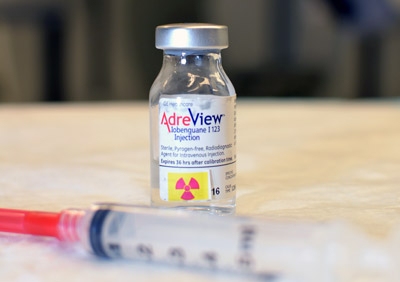
Not all treatments work in all patients, but often it’s not possible to know ahead of time who will benefit. The Ottawa Heart Institute recently became the first centre in Canada to use a new radioactive tracer clinically to better define the prognosis of a patient in heart failure.
The tracer, called AdreView, can be used to determine the prognosis of heart failure patients and guide patient selection for advanced therapies such as implantation of an implantable cardioverter defibrillator (ICD), according to Terrence Ruddy, MD, the Director of Nuclear Cardiology at the Heart Institute.
Heart failure is a weakening of the heart muscle that leaves the heart unable to pump enough blood through the body. Pumping capacity of the heart is measured by ejection fraction. A healthy heart has an ejection fraction of 50%. In a patient with heart failure, that percentage is reduced and is a marker of the severity of heart muscle weakness. Activation of the sympathetic nervous system is also a measure of the severity of heart failure and can be assessed with AdreView imaging. This additional information can help physicians better determine which patients may benefit from an ICD.
Screening out those unlikely to benefit from the therapy is important. From the patient perspective, they avoid an unnecessary invasive procedure. From the healthcare system perspective, ICDs are expensive. An implant that is not helpful is a waste of scarce healthcare dollars.
This work with AdreView imaging relates to landmark research that came out of the Heart Institute in 2010 which showed that ICDs benefit patients with mild and moderate heart failure, not just those with severe heart failure. (See “RAFT Trial Named Among Major Research Advances of 2010”)
“Innovation in cardiac imaging is a longstanding priority for the Heart Institute,” said Dr. Ruddy. “This work with AdreView is just the latest example from our Nuclear Cardiology team.”
While AdreView is used infrequently right now, Dr. Ruddy predicted that it will be used more and more as physicians become familiar with it and learn how to use the information it provides to help guide care.

